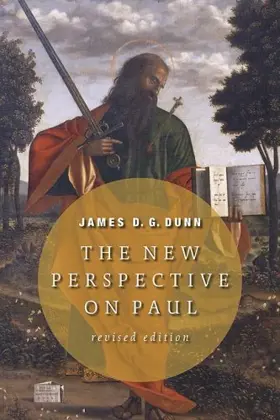

The New Perspective on Paul
Pages
539
Publisher
Eerdmans
Published
12/18/2007
ISBN-13
9780802845627
Reviews
I found this book very interesting indeed. It is a combination of articles and conference papers that Dunn has written since his reading of Sander's take on Judaism. Some of the articles do cross over a little which in fairness is to be expected, but it is interesting tracing Dunn's Pauline theology over the years. I would have to say this has been the toughest book for me to take in theologically as my thinking has been so permeated with the Lutheran perspective on 'works of the law'. Since reading I must confess this book has converted me to an NPP position. His arguments are logical and evidenced by so much background information. Love or hate the NPP it is worth looking into. Do not just throw away this ideal because it contains the word 'new' (as I almost did before reading on). I still hold that elements of Judaism were legalistic or manipulated the law which of course lost the laws focus (dietary and Sabbath laws particularly shown by Christ Himself as well as the juxtaposition between the praying tax collector and the self righteous pharisee) but not to the extent that Luther perceived. As the NPP shows, such inventions were created as 'boundary markers' to push back the tide of Gentile cultural influence and hold true to their Jewish nationality (and not make the same mistakes as were done in the days of Ezra and Nehemiah).
In all I think Dunn's NPP position is more level headed than Wright's. Wright tries to work things into Paul which I do not think are there. In saying this Wright is an excellent writer and is enjoyable all the same.
In his Manson Memorial Lecture of 1982, James Dunn delivered a paper that would prove programmatic not only for Dunn’s own work but also for the scholarly guild over the next thirty years. “The New Perspective on Paul” is the title of that lecture, the moniker given to the movement it represents, and now the title of a volume that collects twenty of Dunn’s earlier essays on the subject. This volume also contains two important new contributions in the way of a nearly one-hundred-page assessment of the project (“The New Perspective: Whence, What and Whither?”) and a new essay on Phil 3:2–14 (a complete list of the essays is provided at the end of the review). Dunn’s narrative of the New Perspective in the opening chapter contains important summaries and clarifications of his own position as well as responses to his critics. The initial summary of what Dunn means by the “New Perspective” is particularly instructive in coming to grips not only with Dunn’s own project but also with the larger question of whether there is such a thing as the New Perspective (singular) in New Testament scholarship, and if so which scholars might be working within this framework. He summarizes his New Perspective with these five points: (1) E. P.
[Full Review]


